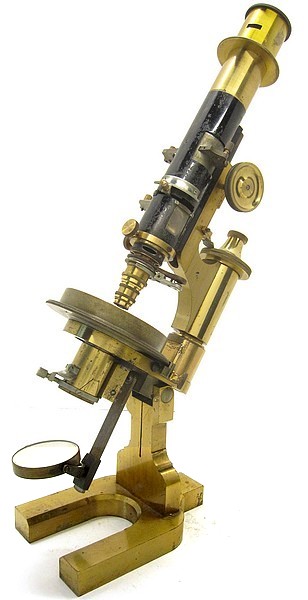

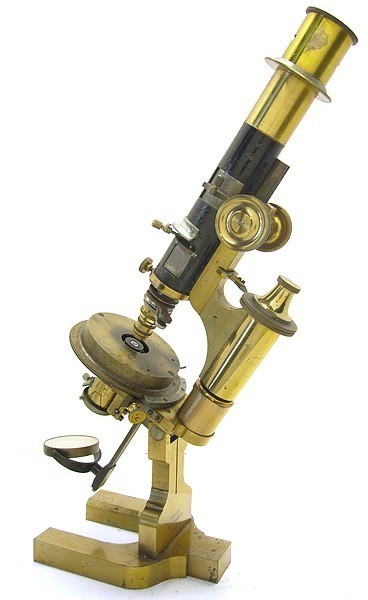
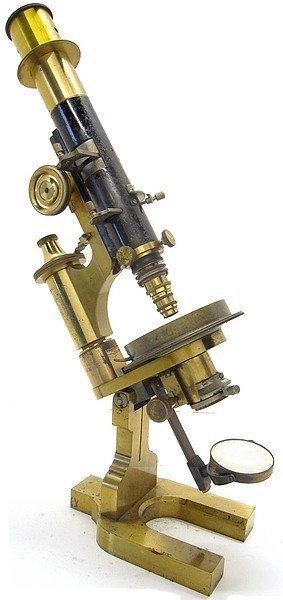

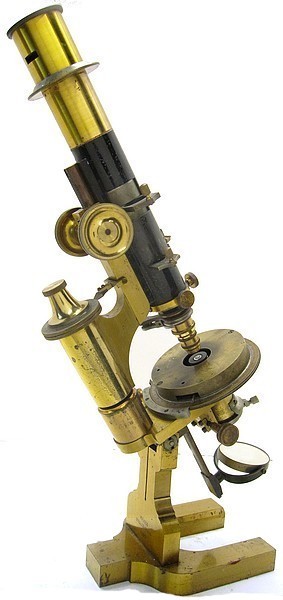
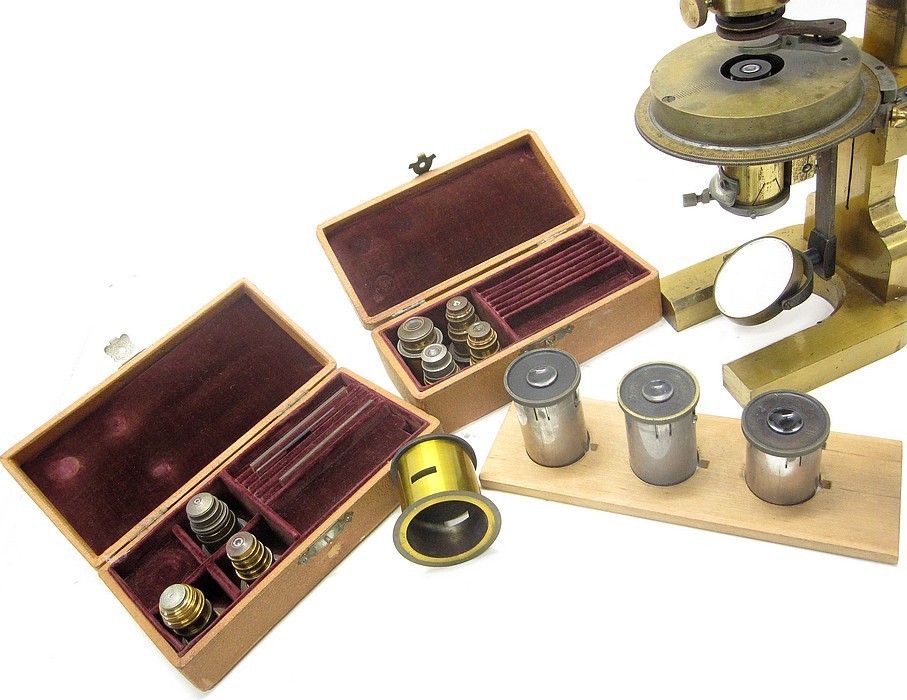
Among the surviving accessories are seven objectives marked 0, 3, 4, 5, 7, 9, and 1/15 oil immersion that are stored in two leather-covered boxes, three eyepieces, an analyzing prism mounted on a slide fitted within the tube, an eyepiece goniometer with analyzing prism, a Bertrand lens mounted on a slide fitted within the tube, glass compensator plates that fit in a slot located above the objective, and the sub-stage polarizing condenser system where the top two elements can be moved aside using a lever mounted on the stage. The storage case has its lock and key.
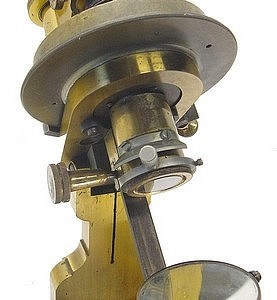
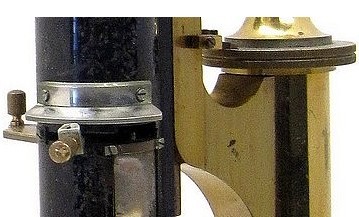
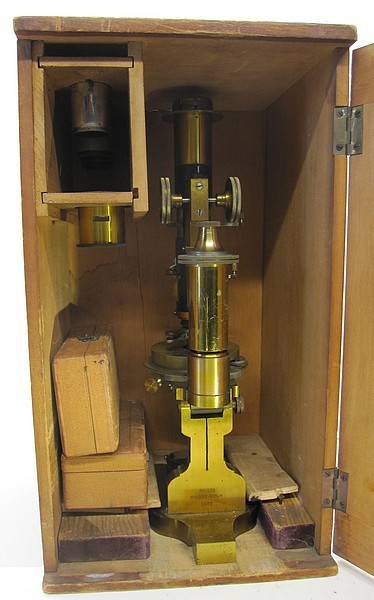
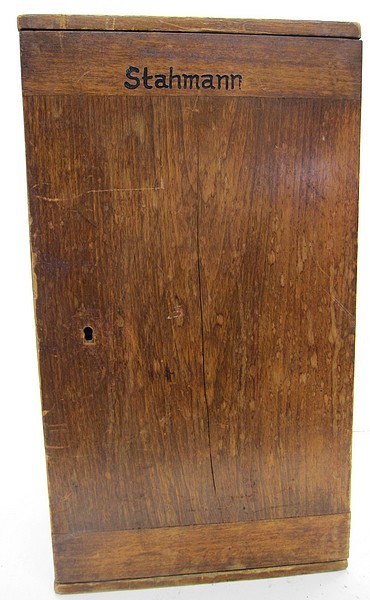
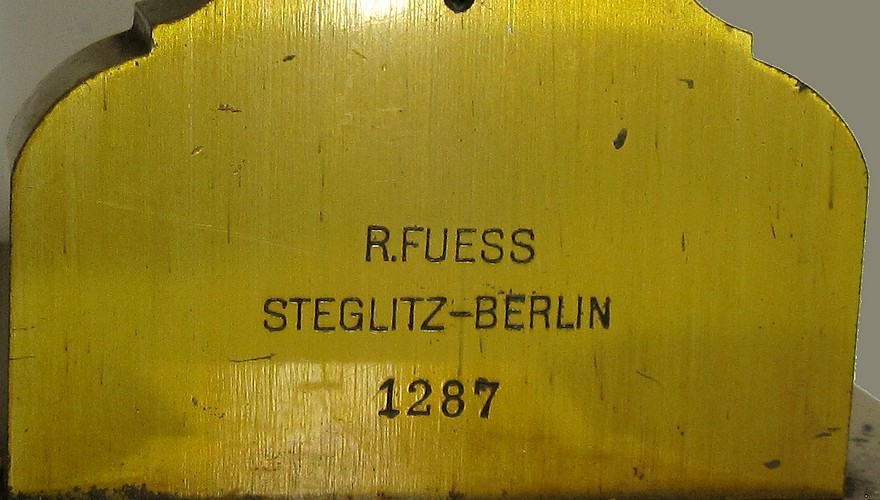
This petrological microscope is made entirely of brass with bright
lacquered, black enameled, and nickel-plated surface finishes. The
main focus adjustment is by rack and pinion, while fine-adjustment
is by a calibrated micrometer screw with a verier located at the
back of the limb, which allows the measurement of the thickness of
the object being observed. The body tube has centering adjustments.
To facilitate the change of objectives, they are not screwed
on but held by the clamp. Immediately above the clamp is a slot
for the introduction of a Klein’s plate, quarter-wave plate, etc.
Three glass plates are included that are stored in one of the leather boxes.
The stand measures about 16-inches tall, as shown in some of the photos.
The rotating stage is divided into 360°, with two verniers each reading
to 5 minutes. The stage has a centering adjustment and is provided with
cross-divisions for the orientation of the specimen. The sub-stage,
which focuses by rack and pinion, holds a polarizer and a three-element condenser. The top elements can
be moved aside for low-power work using a lever mounted on the side of
the stage. The polarizer has an adjustment and scale allowing a rotation up to 90°.
The analyzing prism is mounted on a slide within the tube, which also
has an adjustment and scale allowing a rotation of up to 90°.
Alternatively, the analyzing prism within the tube can be slid out of
the optical path and replaced with a different analyzing prism that is
located above the eyepiece in a goniometer attachment. A Bertrand lens
is mounted on a slide within the tube, which can be focused manually
by moving the nickel-plated draw tube. The double sided mirror is mounted on an arm
that is moveable from side to side.
Elsewhere in this collection is a similar stand that lacks the calibrated rotation mechanisms of the tube mounted analyzer and the polarizer.
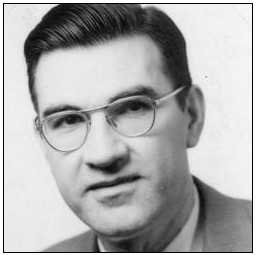
Mark A. Stahmann 1914-2000